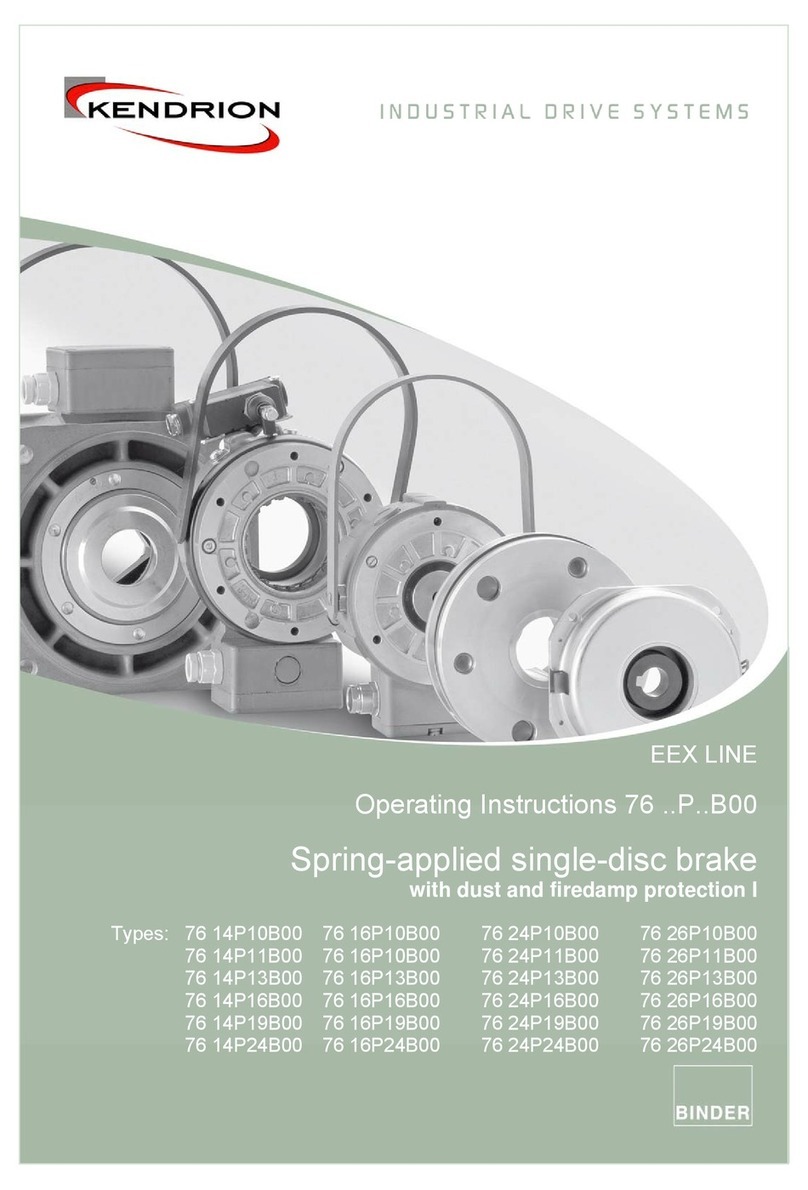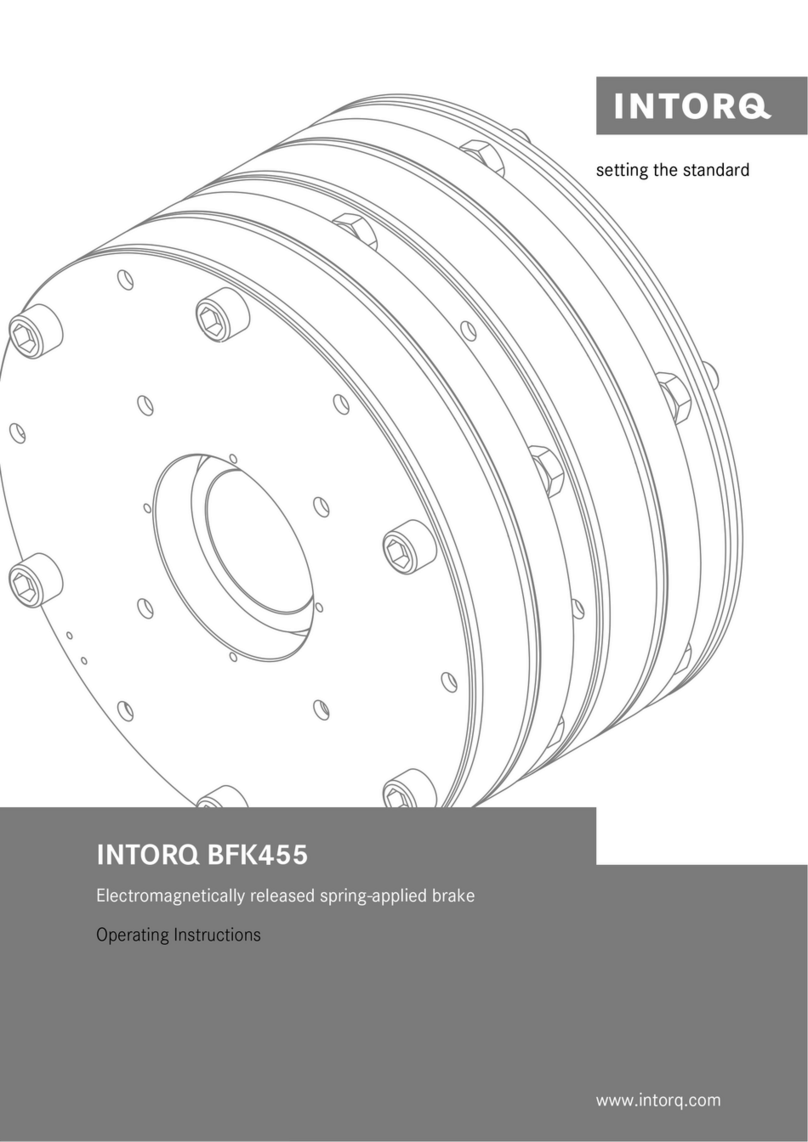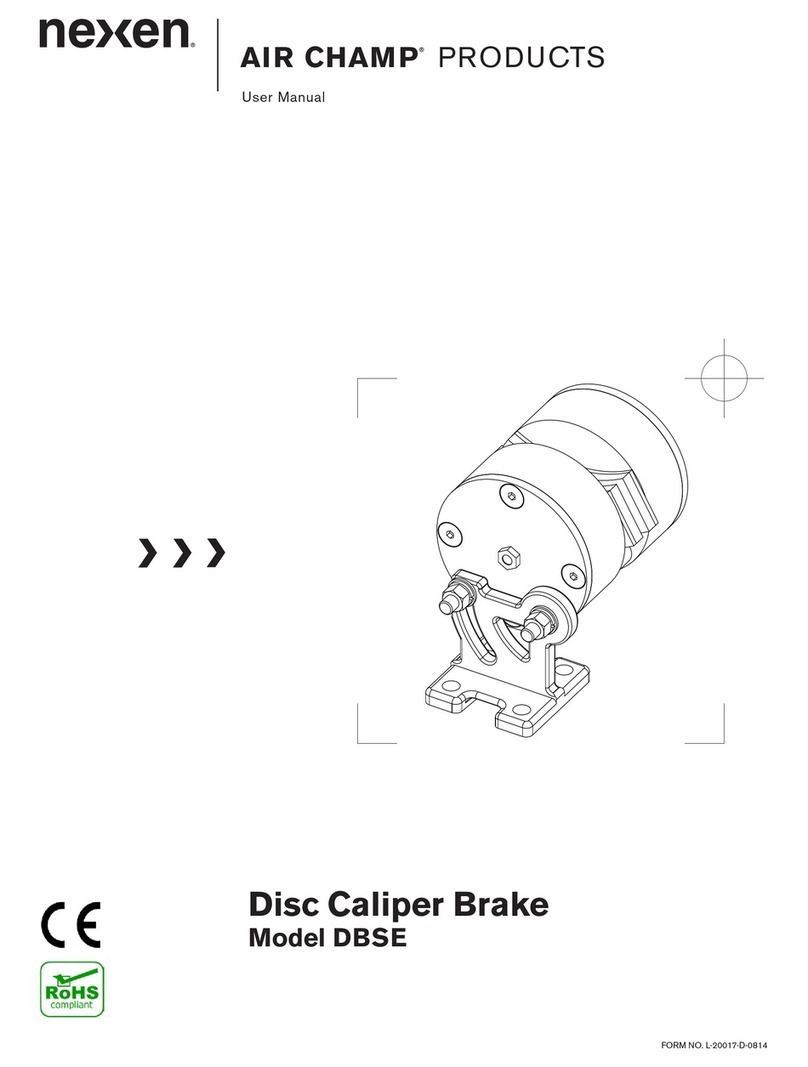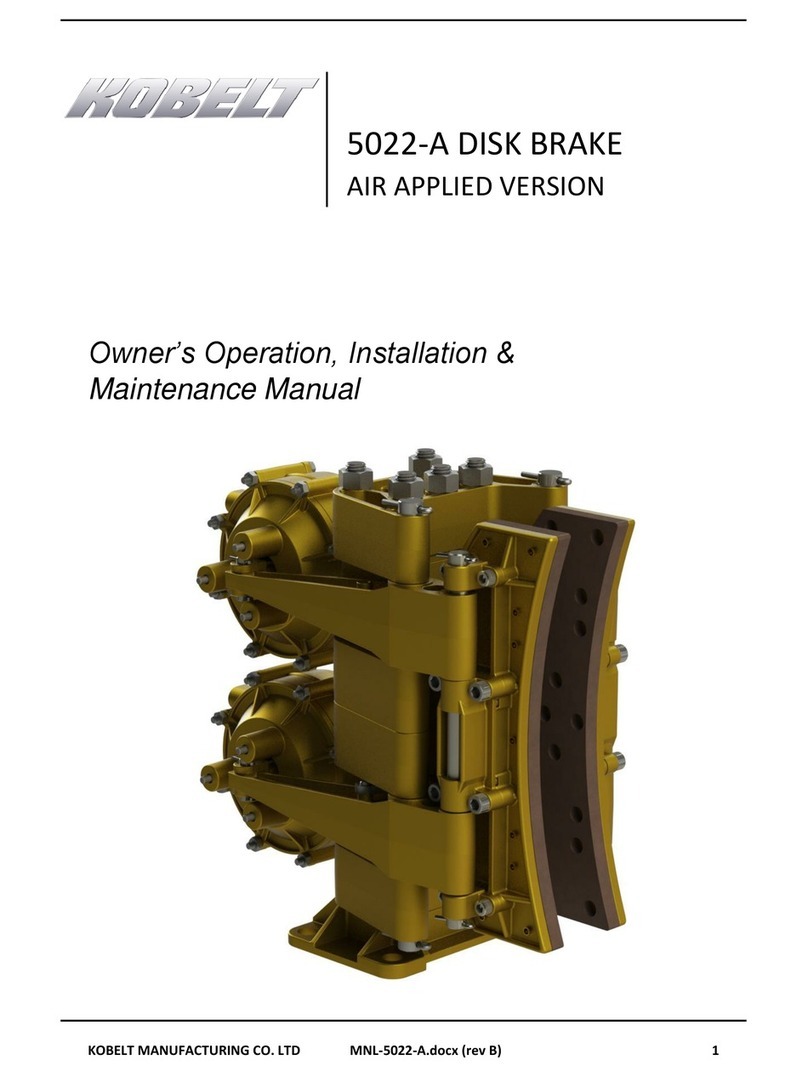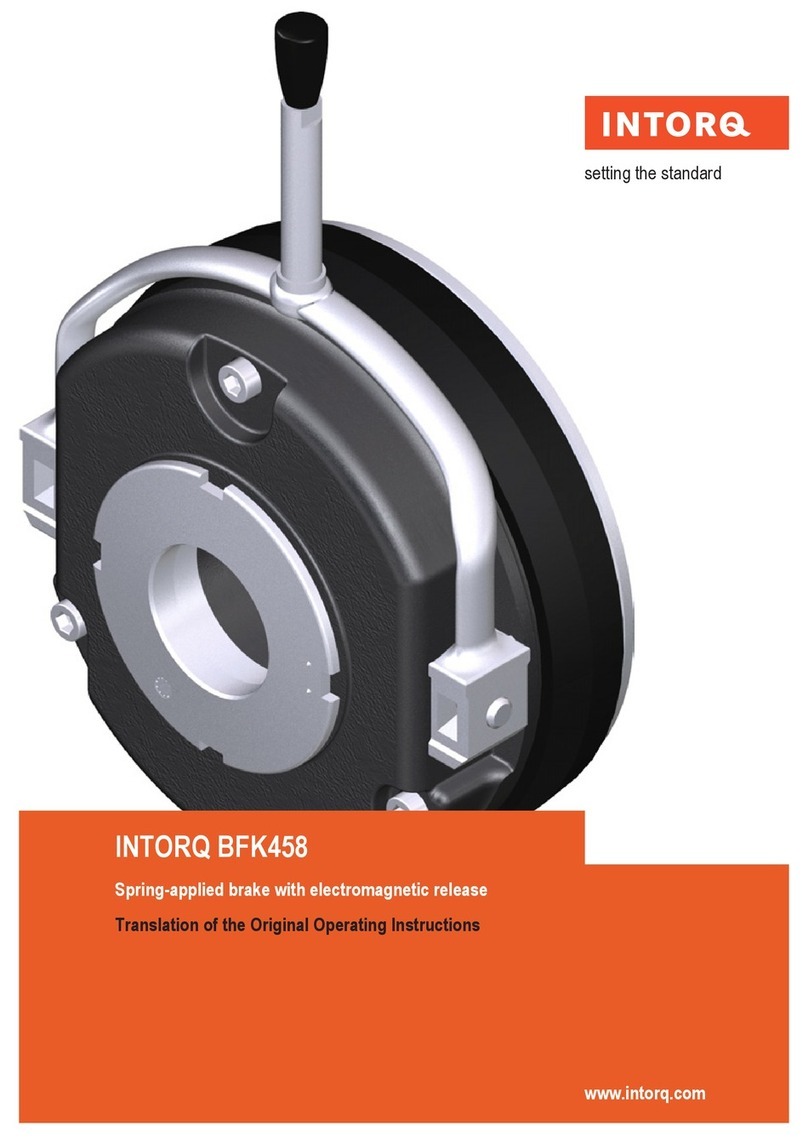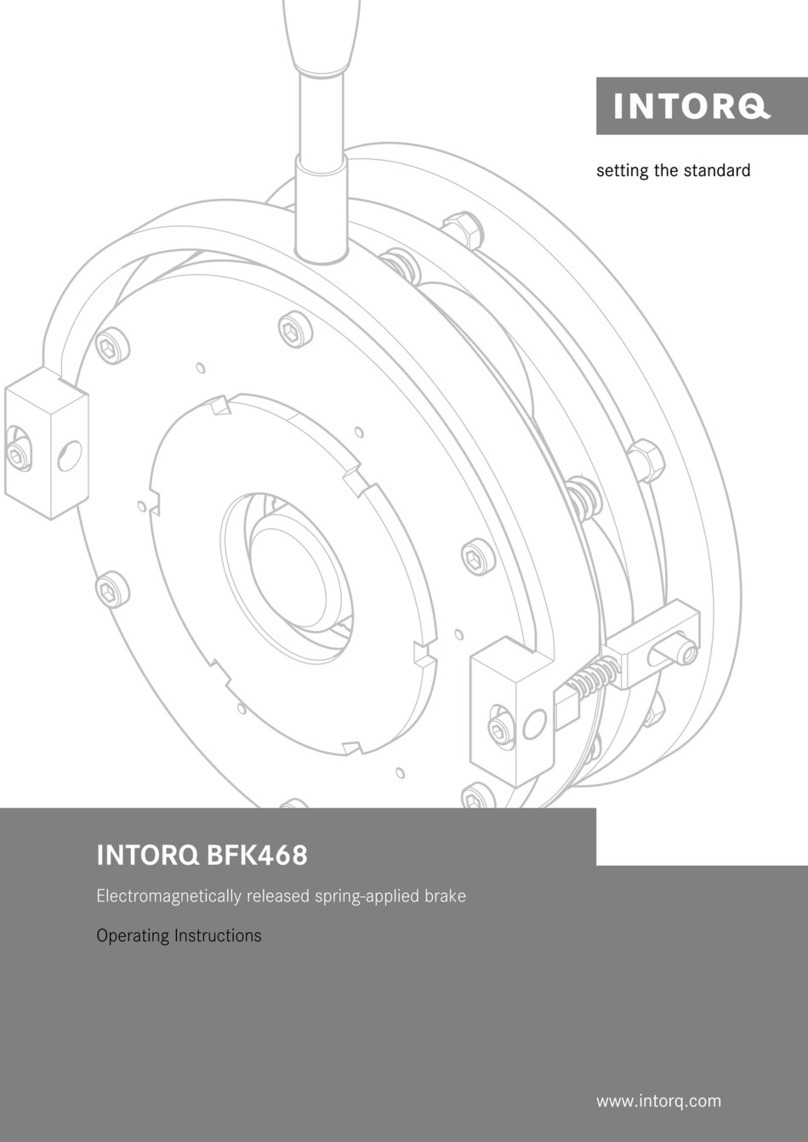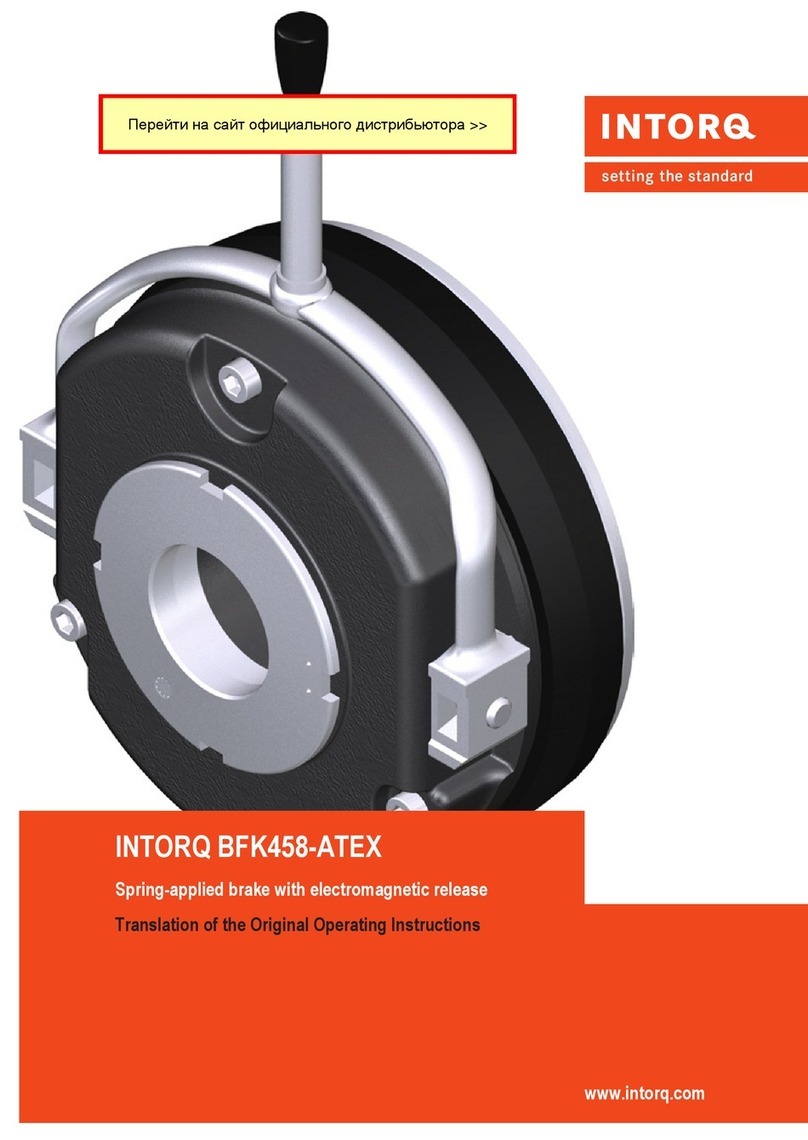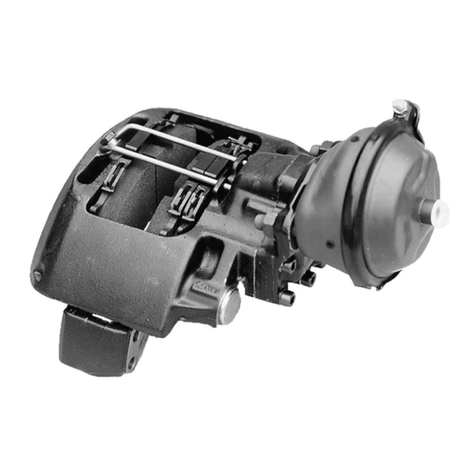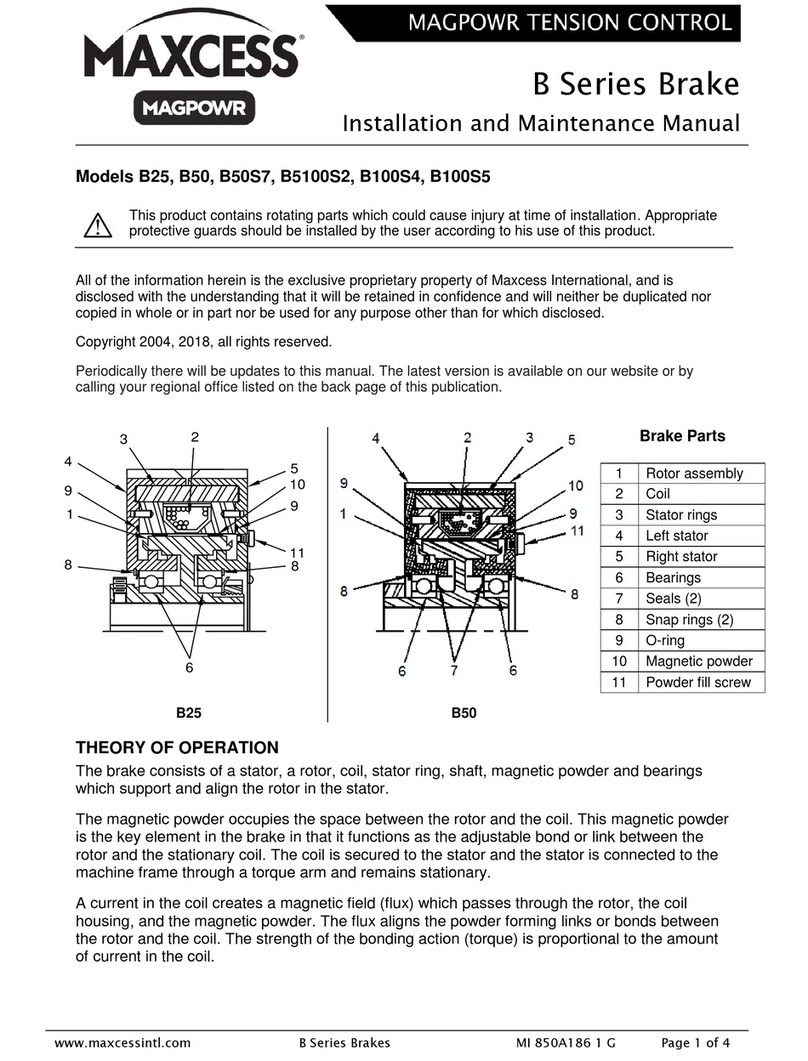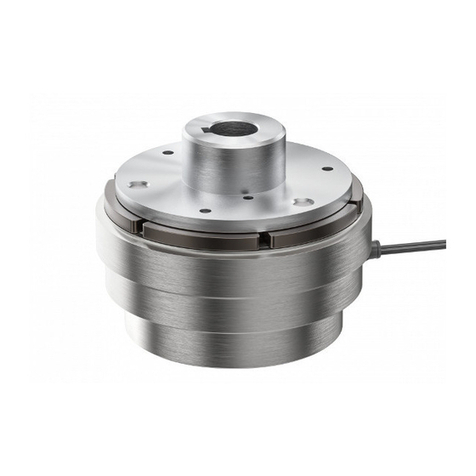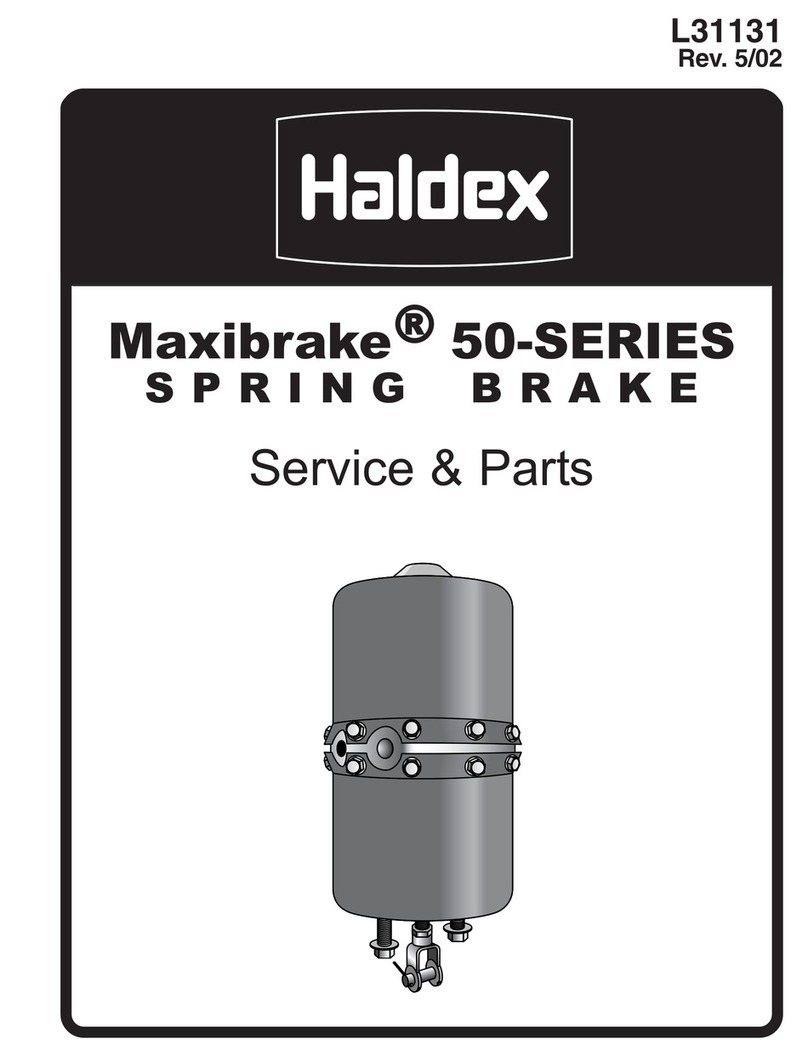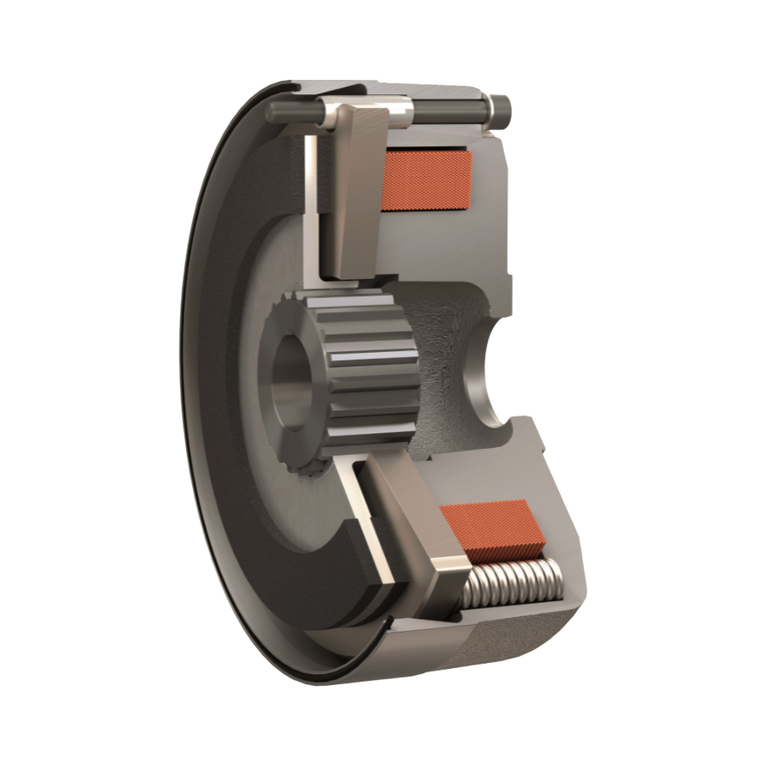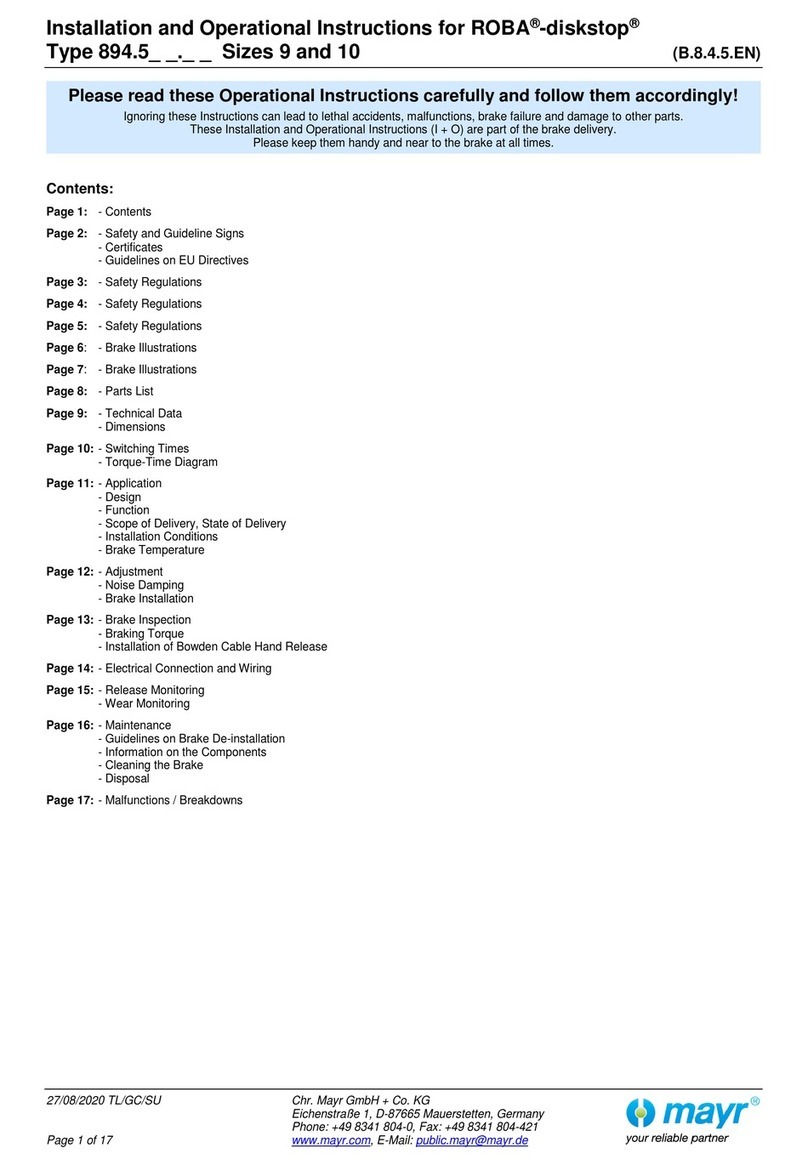
Installation and Operational Instructions for BRE250 and BRE400
ROBA-stop®-M brake Type 891.0_ _._
Sizes 250 and 500 (E070 09 203 001 4 EN)
31/10/2019 TK/MW Chr. Mayr GmbH + Co. KG
Eichenstraße 1, D-87665 Mauerstetten, Germany
Phone: +49 8341 804-0, Fax: +49 8341 804-421
Page 5 of 20 www.mayr.com, E-Mail: info@mayr.com
Safety Regulations
These Safety Regulations are user hints only and may not be complete!
Climate Conditions
The electromagnetic brake is suitable for applications with an
ambient temperature of between -20 °C and +40 °C.
Reduction in braking torque possible
Condensation can form on the brake and cause
a loss in braking torque:
due to fast changes in temperature
at temperatures of around or under freez-
ing point
The user is responsible for taking appropriate
countermeasures (e.g. forced convection, heat-
ing, drain screw).
Brake malfunction possible
Condensation can form on the brake and cause
malfunctions:
at temperatures around or under freezing
point, the brake can freeze over and not
release any more.
The user is responsible for taking appropriate
countermeasures (e.g. forced convection, heat-
ing, drain screw).
The system function must be checked by the user after longer
downtimes.
At high temperatures and in high humidity or
with occurring dampness, the rotor can seize
up to the armature disk or the bearing shield /
the flange plate after longer downtimes.
Intended Use
mayr®-brakes have been developed, manufactured and tested in
compliance with the DIN VDE 0580 standard and in accordance
with the EU Low Voltage Directive as electromagnetic compo-
nents. During installation, operation and maintenance of the
product, the requirements for the standard must be observed.
mayr®-brakes are for use in machines and systems and must
only be used in the situations for which they are ordered and
confirmed. Using them for any other purpose is not allowed.
Grounding Connection
The brake is designed for Protection Class I. This protection co-
vers not only the basic insulation, but also the connection of all
conductive parts to the protective conductor (PE) on the fixed in-
stallation. If the basic insulation fails, no contact voltage will re-
main. Please carry out a standardised inspection of the protec-
tive conductor connections to all contactable metal parts!
Class of Insulation F (+155 °C)
The insulation components on the magnetic coils are manufac-
tured at least to class of insulation F (+155 °C).
Protection
IP54 (Type 891.0_ _.0):
Dust-proof and protected against contact as well as against wa-
ter spray from any direction.
When installed, under a fan cover provided by the customer,
Protection IP55 is valid: Dust-proof and protected against con-
tact as well as against jet water from a nozzle coming from any
direction.
IP66 (Type 891.0_ _.1):
When installed, dust-proof and protected against contact as well
as against strong jet water from a nozzle coming from any direc-
tion.
Brake Storage
Store the brakes in a horizontal position, in dry rooms and
dust and vibration-free.
Relative air humidity < 50 %.
Temperature without major fluctuations within a range from
-20 °C up to +40 °C.
Do not store in direct sunlight or UV light.
Do not store aggressive, corrosive substances (solvents / ac-
ids / lyes / salts / oils / etc.) near to the brakes.
For longer storage of more than 2 years, special measures are
required (please contact the manufacturer).
Storage acc. DIN EN 60721-3-1 (including the limitations / addi-
tions described above): 1K3; 1Z1; 1B1; 1C2; 1S3; 1M1
Handling
Before installation, the brake must be inspected and found to
be in proper condition.
The brake function must be inspected both once attachment
has taken place as well as after longer system downtimes, in
order to prevent the drive starting up against possibly seized lin-
ings.
User-implemented Protective Measures:
Please cover moving parts to protect against injury
through seizure.
Place a cover on the magnetic part to protect against injury
through high temperatures.
Protection circuit: When switching DC-side, the coil must
be protected using a suitable protection circuit in accordance
with VDE 0580, which is already integrated in mayr®-rectifi-
ers and Nord half-wave and bridge rectifiers. To protect the
switching contact from consumption when using DC-side
switching, additional protective measures are necessary
(e.g. series connection of switching contacts). The switching
contacts used should have a minimum contact opening of 3
mm and should be suitable for inductive load switching.
Please make sure on selection that the rated voltage and the
rated operating current are sufficient. Depending on the ap-
plication, the switching contact can also be protected by
other protection circuits (e.g. spark quenching unit, half-wave
and bridge rectifiers), although this may of course then alter
the switching times.
Take precautions against freeze-up of the friction sur-
faces in high humidity and at low temperatures.
